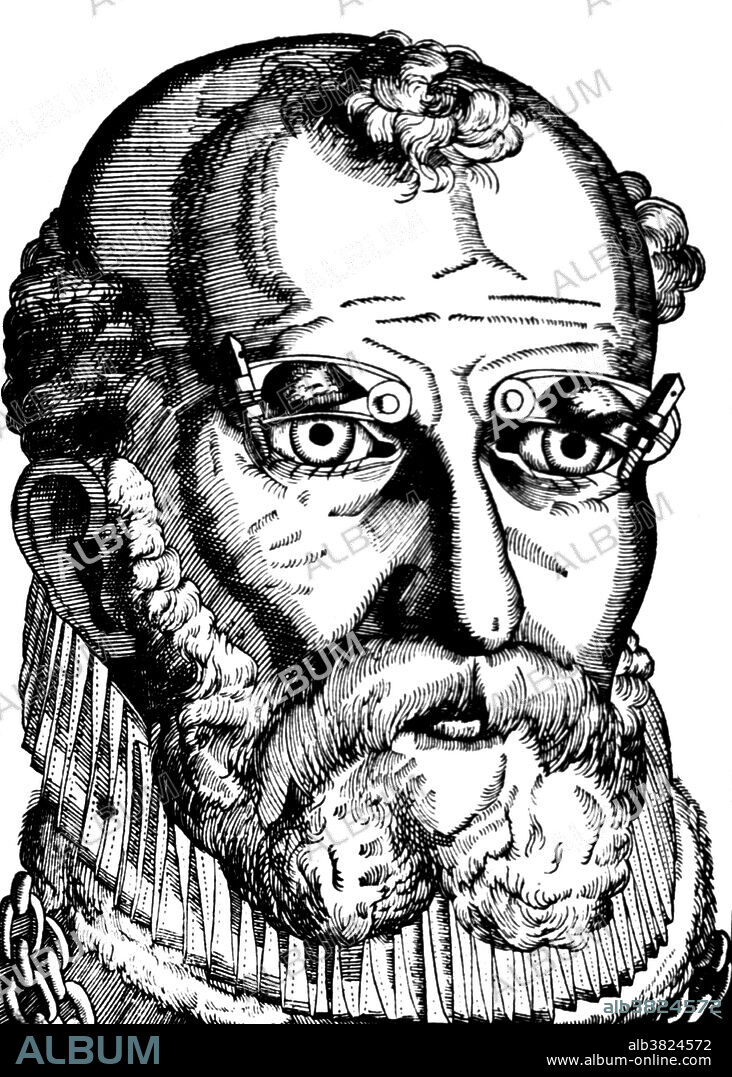alb3824572
Eyelid Surgery, 16th Century

|
Add to another lightbox |
|
Add to another lightbox |



Buy this image.
Select the use:

Title:
Eyelid Surgery, 16th Century
Caption:
Woodcut entitled: Use of the clamp in eyelid surgery. Close-up of a man's face showing eyelid clamps for the treatment of ptosis. Ptosis is a drooping or falling of the upper or lower eyelid. The drooping may be worse after being awake longer, when the individual's muscles are tired. If severe enough and left untreated, the drooping eyelid can cause other conditions, such as amblyopia or astigmatism. Ptosis occurs when the muscles that raise the eyelid (levator and Müller's muscles) are not strong enough to do so properly. It can affect one eye or both eyes and is more common in the elderly, as muscles in the eyelids may begin to deteriorate. Ptosis can also be congenital. Appeared in Ophthalmodouleia by Georg Bartisch, 1583.
Category:
Medical: History
Credit:
Album / NLM/Science Source
Releases:
Image size:
2700 x 3775 px | 29.2 MB
Print size:
22.9 x 32.0 cm | 9.0 x 12.6 in (300 dpi)
Keywords:
1584 • 16 16TH XVI XVITH SIXTEENTH CENTURY • 16 CENTURY • 16TH CENTURY • 16TH • AESTHETIC SURGERY • ART • ARTWORK • BW • CLAMPS • CONGENITAL • COSMETIC SURGERY • DOUBLE EYELID SURGERY • DRAWING • DROOPING EYELID • ESTHETIC SURGERY • EYE VISION • EYE • EYEBALLS • EYELID OPERATION • EYELID SURGERY • EYELID • EYES • FACELIFT • FALLING EYELID • GEORG BARTISCH • HISTORIC • HISTORICAL • HISTORY • ILLUSTRATION • ILLUSTRATIONS • ILUSTRATION • MALE • MAN • MEDICAL OPERATION • MEDICAL OPERATIONS • MEDICAL • MEDICAL: HISTORY • MEDICINAL • MEDICINE • MEN • OCULAR • OPERATION • OPHTHALMOLOGY • PLASTIC SURGERY • PTOSIS • SCIENCE • SURGEON • SURGERY • TUCK • WEAK MUSCLES • WOODBLOCK PRINT • WOODBLOCK • WOODCARVING • WOODCUT • XVI CENTURY • XYLOGRAPHY
 Pinterest
Pinterest Twitter
Twitter Facebook
Facebook Copy link
Copy link Email
Email
